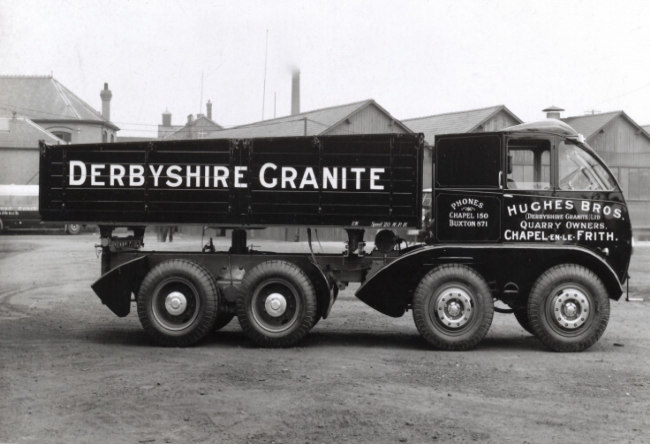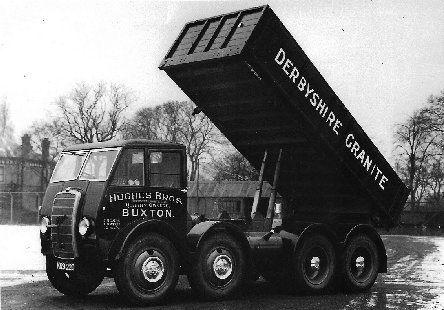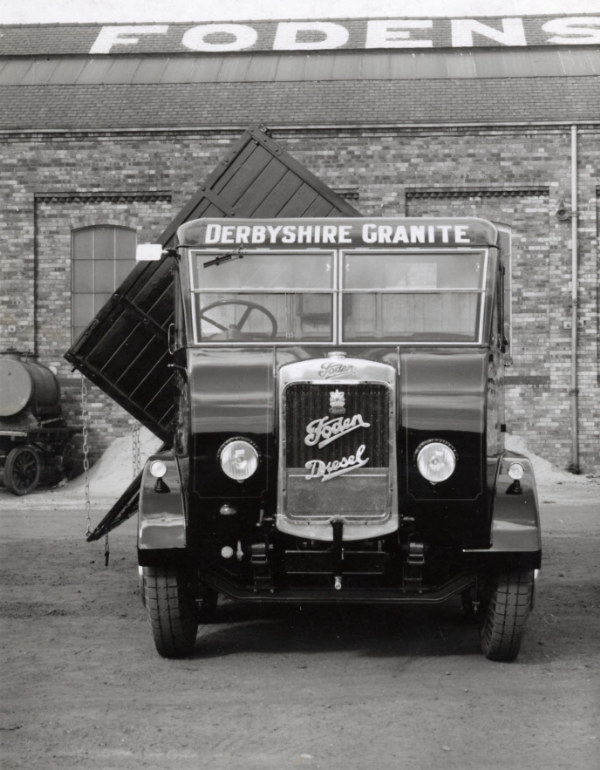Whaley Bridge Local History
y
Steam Wagons & Traction

May I just add that a good part of this subject is not about Whaley Bridge but there is some local subject matter. Also I didn't know such vehicles even existed until this fine thread was started on the forum. A credit to the contributors. Webmaster
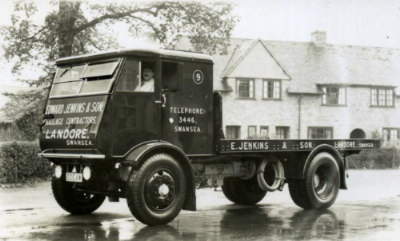
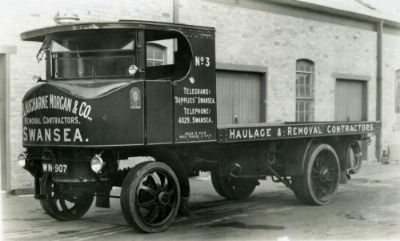
An S4 steam wagon made by Sentinels in Shrewsbury.
A DG4 steam wagon made by Sentinels in Shrewsbury. DG stood for Double Geared, ie they had a two-speed gearbox.
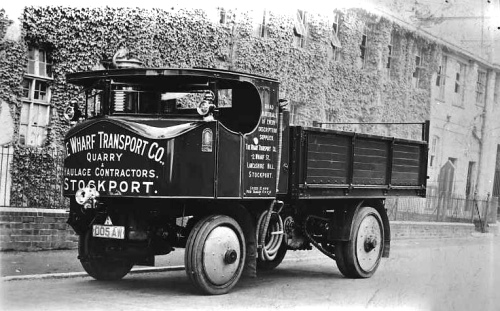
An official Sentinel "works" photograph, as can be seen from the trade plates.
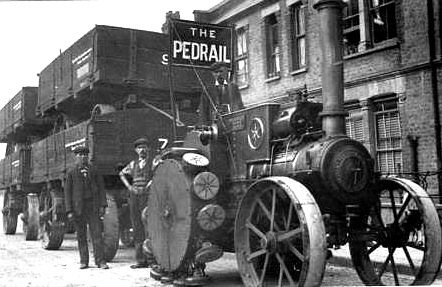
The Pedrail Wheel, this was a device to spread the load a little beyond the rather limited area where a conventional wheel touches the road, and as you can see on the photograph, there is more than one foot in contact with the road. In addition to simple load-spreading, it also helped in adhesion, too. The idea was not too successful, as none survive, but they are a precursor to the caterpillar track, which also spreads the load, and increases the area in contact with the road. Inside the disk cover of the rear wheel, there was all sorts of levers and springs and stuff to enable the various feet to be in contact with the road at once, and all this made the device more complex than the caterpillar track.
The road loco was built by Fosters of Lincoln, as they built the original WWI tanks, so it's not too surprising that they were also involved with prototype pedrail-wheeled traction engines.
The road loco was built by Fosters of Lincoln, as they built the original WWI tanks, so it's not too surprising that they were also involved with prototype pedrail-
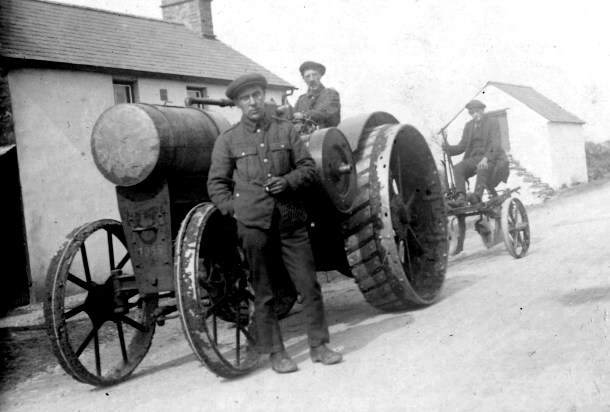
This is an early farm tractor, rather than a traction engine. It will have had a single cylinder petrol "putt putt" engine, and the tank at the front was for cooling water to keep the cylinder head of the engine cool.
This was before radiators became common. I would say its an International "Titan", like the preserved one in the other photograph below. Buggyite (forum member)
This was before radiators became common. I would say its an International "Titan", like the preserved one in the other photograph below. Buggyite (forum member)
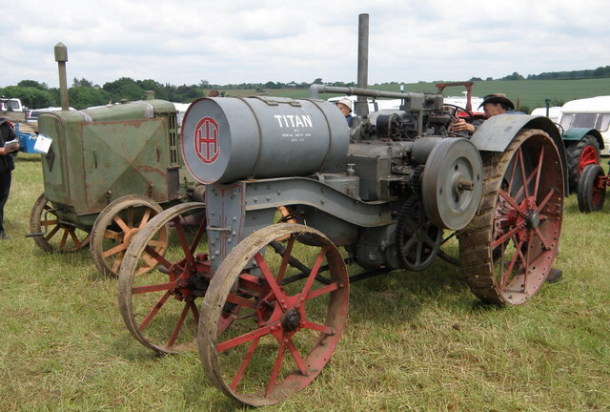
This photograph is a slight mystery. It is claimed to be the Whaley Bridge tarmac gang about to lay the base course on a stretch of Elnor Lane.
Later Shallcross (forum member) posted :-
After a little research I can confirm that this picture was taken in 1914 and it is actually outside the lodge to Shrigley Hall, not being to far away it may have worked in the area but this is not Elnor Lane.
Later Shallcross (forum member) posted :-
After a little research I can confirm that this picture was taken in 1914 and it is actually outside the lodge to Shrigley Hall, not being to far away it may have worked in the area but this is not Elnor Lane.
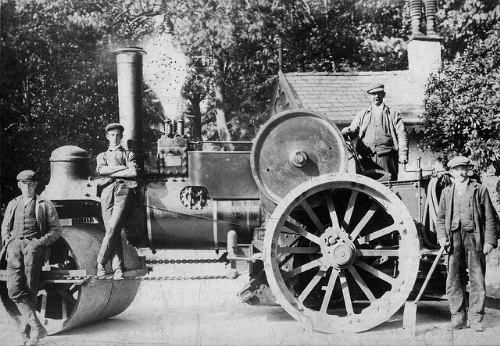
Another interesting photograph.
The council Steam Roller at Whaley Canal Basin
The council Steam Roller at Whaley Canal Basin
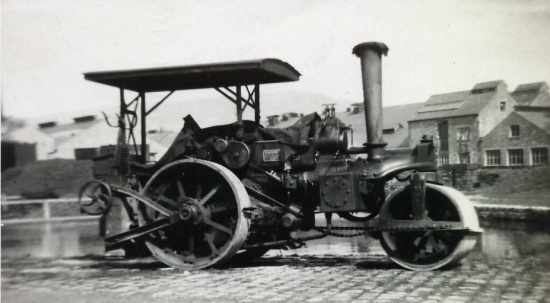
This is almost definitely of an Aveling roller, but I am struggling to further identify it. I have never seen an Aveling with what are called "belly tanks" - the tank slung under the boiler just behind the front rolls. Normally, only road haulage traction engines would have belly tanks, to increase the distance they can travel between fill-ups of water. Rollers, because of the nature of the work they carry out, don't need this. Some rollers were built as convertibles, ie, the rolls could be exchanged for wheels, so they could be used for haulage too, but the tank is too far forward for this I think.
The alternative would be that the tank is for tar , as some were made with tar-spraying equipment, but I always though this was limited to Fowlers.
I suspect that this roller is relatively modern, ie after 1920 or so, and might even be built by Aveling Barford, the name taken when Aveling & Porter merged with Barford & Perkins around 1930-ish. Buggyite (forum member)
This was updated later.
It is an Aveling Barford class AV 6½ tonner, number 14152, which belonged to Derbyshire CC, rather than Whaley Bridge UDC.
It would have been built around 1931, hence it would have been Aveling Barford rather than Aveling and Porter. Buggyite (forum member)
The alternative would be that the tank is for tar , as some were made with tar-
I suspect that this roller is relatively modern, ie after 1920 or so, and might even be built by Aveling Barford, the name taken when Aveling & Porter merged with Barford & Perkins around 1930-
This was updated later.
It is an Aveling Barford class AV 6½ tonner, number 14152, which belonged to Derbyshire CC, rather than Whaley Bridge UDC.
It would have been built around 1931, hence it would have been Aveling Barford rather than Aveling and Porter. Buggyite (forum member)
Chapel-en-le-Frith Aveling & Porter roller. It's an R10, which means that it is nominally 10 tons in weight, but actually weighs about 12½ tons in use. The sign in front almost definitely says "Beware of the Steam Roller", as its identical (or even the same one as) to the sign on the well-known picture of a steam roller working on Lower Lane in Chinley by what used to be the bank, as seen in Alan Watson's "Bygone Days of Chinley".
This particular type of roller was made for many years, so it could have been built any time from about 1905 to 1920.
I presume that the base for this roller would be the council yard on Castleton Road in Chapel. Buggyite (forum member)
This particular type of roller was made for many years, so it could have been built any time from about 1905 to 1920.
I presume that the base for this roller would be the council yard on Castleton Road in Chapel. Buggyite (forum member)
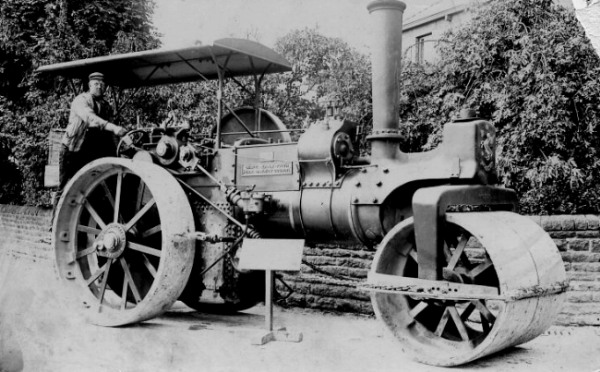
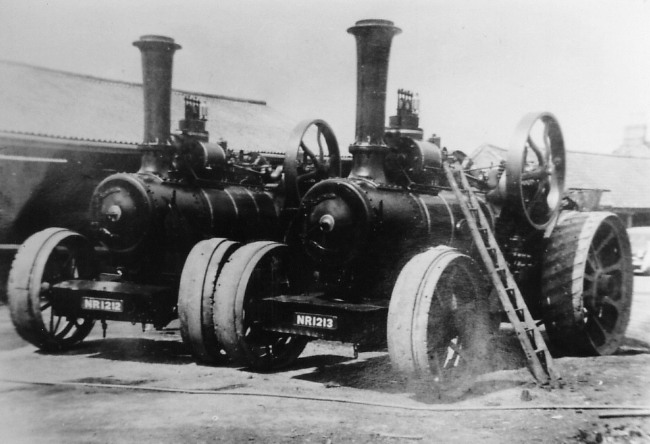
These engines are a pair of Fowler Ploughing engines, built in 1875.
They were used in pairs, one either side of the field, and pulled a reversible plough across the field. As there is no arable land round here, they were never used in the High Peak.
They were owned for many many years by Beeby Brothers of Rempstone, and have survived into preservation. A similar engine was exhibited at this year's Water Weekend (2010) by the owners of Portobello Engineering who have completely rebuilt it.
When I said "never used in the High Peak", I should have said "apart from a pair converted to diesel, which were used to dredge a pond at Bowden Hall in Chapel in the 1960s" as they also found a use in such work, as they could pull a dredging bucket from one side of a pond to the other. Buggyite (forum member)
They were used in pairs, one either side of the field, and pulled a reversible plough across the field. As there is no arable land round here, they were never used in the High Peak.
They were owned for many many years by Beeby Brothers of Rempstone, and have survived into preservation. A similar engine was exhibited at this year's Water Weekend (2010) by the owners of Portobello Engineering who have completely rebuilt it.
When I said "never used in the High Peak", I should have said "apart from a pair converted to diesel, which were used to dredge a pond at Bowden Hall in Chapel in the 1960s" as they also found a use in such work, as they could pull a dredging bucket from one side of a pond to the other. Buggyite (forum member)
This is a Wallis & Stevens overtype steam wagon, built at their works in Basingstoke, Hampshire. There is to my knowledge only one surviving example, and that is owned by the Hampshire County Council Museums Service, and it might be on display at their "Milestones" museum in Basingstoke.
There they have stuff from Hampshire manufacturers like Taskers, Wallises and Thorneycroft. Buggyite (forum member)
There they have stuff from Hampshire manufacturers like Taskers, Wallises and Thorneycroft. Buggyite (forum member)
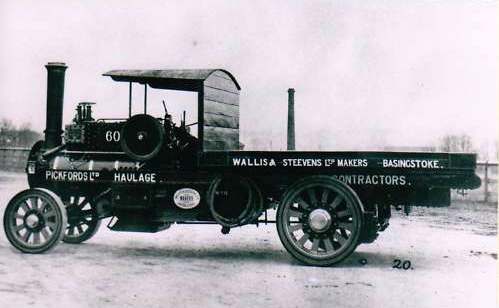
This is Pickfords transporting part of the Electric Shovel to B.L.I. at Tunstead, finding themselves in a spot of bother under the Viaduct in Buxton, Dukes Drive I think. Shallcross (forum member)
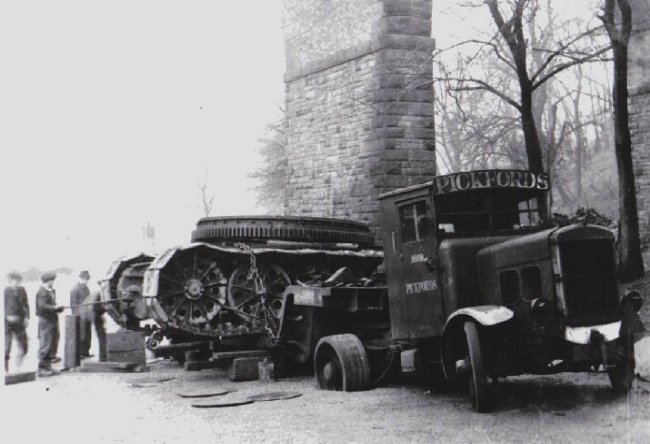
It's definitely a Scammell tractor unit, and very probably the low-loader trailer would have been made by them, too. As can be seen, the wheels are shod with solid rubber. Its quite hard to say when it would have been built, but I think they only started making articulated wagons in 1921, and from other photos out there, I suspect that the customer had the choice of solid rubber or pneumatic tyres, probably up till around 1930.
The big steel discs that can be seen lying around the road were used on soft ground under the wheels to spread the load, and prevent sinking. Something they should have been using beforehand, I'd suggest! Next time I go along Dukes Drive, I will have a look if there is an outlet from a spring opposite where this happened, because it very much looks like they've broken into a culvert.
Dukes Drive has a weight limit on it these days! Any theoretical time saved in using Dukes Drive instead of Dale Road will certainly have been lost many times over in jacking and packing the load up, then the trailer, then finally the back of the tractor unit. Buggyite (forum member)
The big steel discs that can be seen lying around the road were used on soft ground under the wheels to spread the load, and prevent sinking. Something they should have been using beforehand, I'd suggest! Next time I go along Dukes Drive, I will have a look if there is an outlet from a spring opposite where this happened, because it very much looks like they've broken into a culvert.
Dukes Drive has a weight limit on it these days! Any theoretical time saved in using Dukes Drive instead of Dale Road will certainly have been lost many times over in jacking and packing the load up, then the trailer, then finally the back of the tractor unit. Buggyite (forum member)
The Rocket?
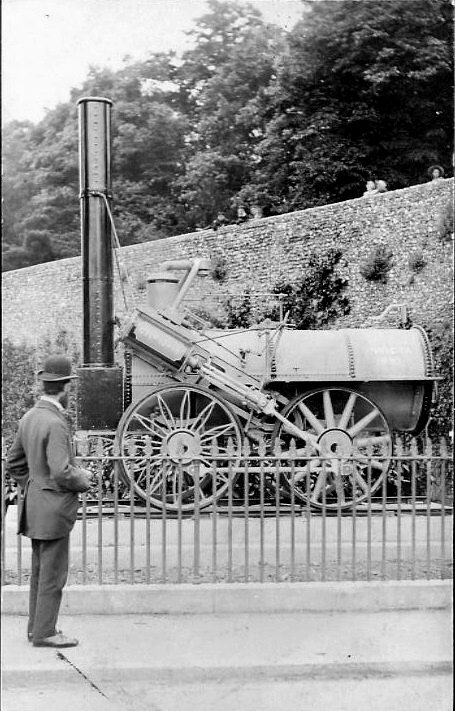
This photograph was from a pre 1920 postcard. The poster required information about it and asked was it the Rocket. Below is the reply.
It's not The Rocket, as that locomotive had only one pair of driving wheels, as per the photograph of the original. There have been various replicas made over the years, with the cylinders more steeply inclined, and with a chimney design, but they all have the 0-2-2 wheel arrangement. Your photo is of an 0-4-0 loco, and is similar to Sans Pareil, one of the other engines that took part in the Rainhill Trials. The trouble is, Sans Pareil had cylinders mounted vertically, so it's unlikely to be that one.
After a bit of research, I reckon it is "Invicta", built by George Stephenson for the Canterbury & Whitstable Railway in 1830.
It stood on a plinth outside the city wall in Canterbury for years, but has subsequently been restored yet again, and is now in Canterbury museum.
Photograph below.
After a bit of research, I reckon it is "Invicta", built by George Stephenson for the Canterbury & Whitstable Railway in 1830.
It stood on a plinth outside the city wall in Canterbury for years, but has subsequently been restored yet again, and is now in Canterbury museum.
Photograph below.
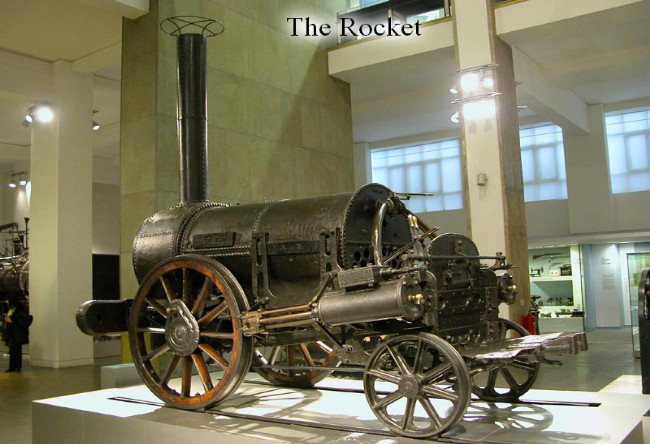
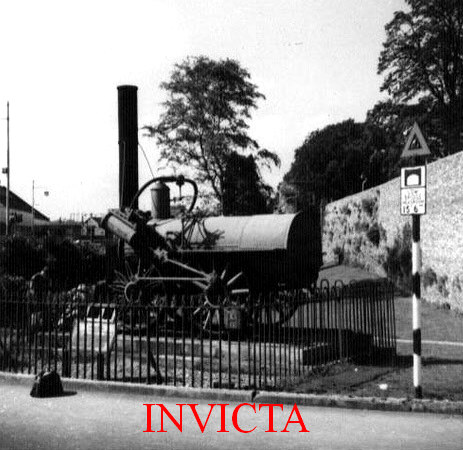
A selection of Foden diesels belonging to Hughes Brothers:
